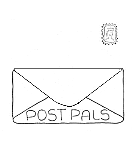
There are also many things you can do to conserve water in your daily routine. Let’s start with the bathroom. Install a low-flow toilet (which can reduce waste by 20%) or a toilet dam in your toilet. What’s a toilet dam? It can be something as simple as a brick or a bottle placed in your toilet tank to cut down the amount of water used with each flushing. Avoid unnecessary flushing by throwing away soiled tissues and the like in wastebaskets. Also, consider conserving by not flushing every time—if its liquid, it’s okay to wait for another use. You can also check for toilet leaks by putting food coloring in the tank. If you have a leak, color will appear in the bowl.
One of the best things you can do for your shower is to install a low-flow shower head, which can save 2.5 gallons of water a minute! An obvious suggestion is to take shorter showers. Some people turn the water on to get themselves wet, turn it off to lather up,
then turn it on again to rinse. When taking a bath, fill the tub only one-third full. And remember, it actually takes far less water to take a shower than fill a bathtub. Finally, don’t leave the water running when brushing your teeth, shaving, or washing your face.
There are many easy things to do in the kitchen to conserve water usage. Pour a pitcher of water, perhaps using one of the popular water filters like Brita, and put it in the refrigerator if you like your water cold. This saves you from running the water to get it cold. Along the same lines, you might consider installing one of those instant water heaters rather than running the water to get it hot.And most of all,never run the dishwasher unless it is full.
When it comes to laundry, do as much of it in cold water as possible. It takes less energy all around not to have to heat the water. Your washing machine has an adjustable water level-use it. Don’t waste water by running a full load with only a few items in it. There are many wonderful water-saving machines on the market these days and be aware that a front-loading machine takes less water than the traditional top-loader.lot of gallons of water to save! And guess what else? This translates into cold, hard cash—to the tune of up to $50 a year.
Don’t overlook simple things, like fixing a leaky faucet. One leaky faucet can waste up to 2,700 gallons of water a year. Check the washers—most of the time it’s an easy fix. If you think you have a leak, but you aren’t sure here’s a simple way to find out: check your water meter, don’t use any water for two hours, and check it again. If the meter doesn’t read the same, you’ve got a leak somewhere. And considering how many gallons of water you could be wasting, it’s worth your while to figure out where. You can also install flow restrictors and make sure that all your pipes are well insulated.
water is life ! Let's don't waste our life while we can make a different today !

 with, it’s important to minimize your garbage by choosing products with minimal packaging, composting, and being a conscious consumer. It’s also a good idea to reuse items as much as possible. One good rule of thumb is to try to reuse everything at least once before turning it into recycling. For instance, use the plastic bag you brought your groceries home in as storage in the refrigerator before you recycle it. Or see if you can’t find a use for that glass bottle in some way and many more.
with, it’s important to minimize your garbage by choosing products with minimal packaging, composting, and being a conscious consumer. It’s also a good idea to reuse items as much as possible. One good rule of thumb is to try to reuse everything at least once before turning it into recycling. For instance, use the plastic bag you brought your groceries home in as storage in the refrigerator before you recycle it. Or see if you can’t find a use for that glass bottle in some way and many more.











